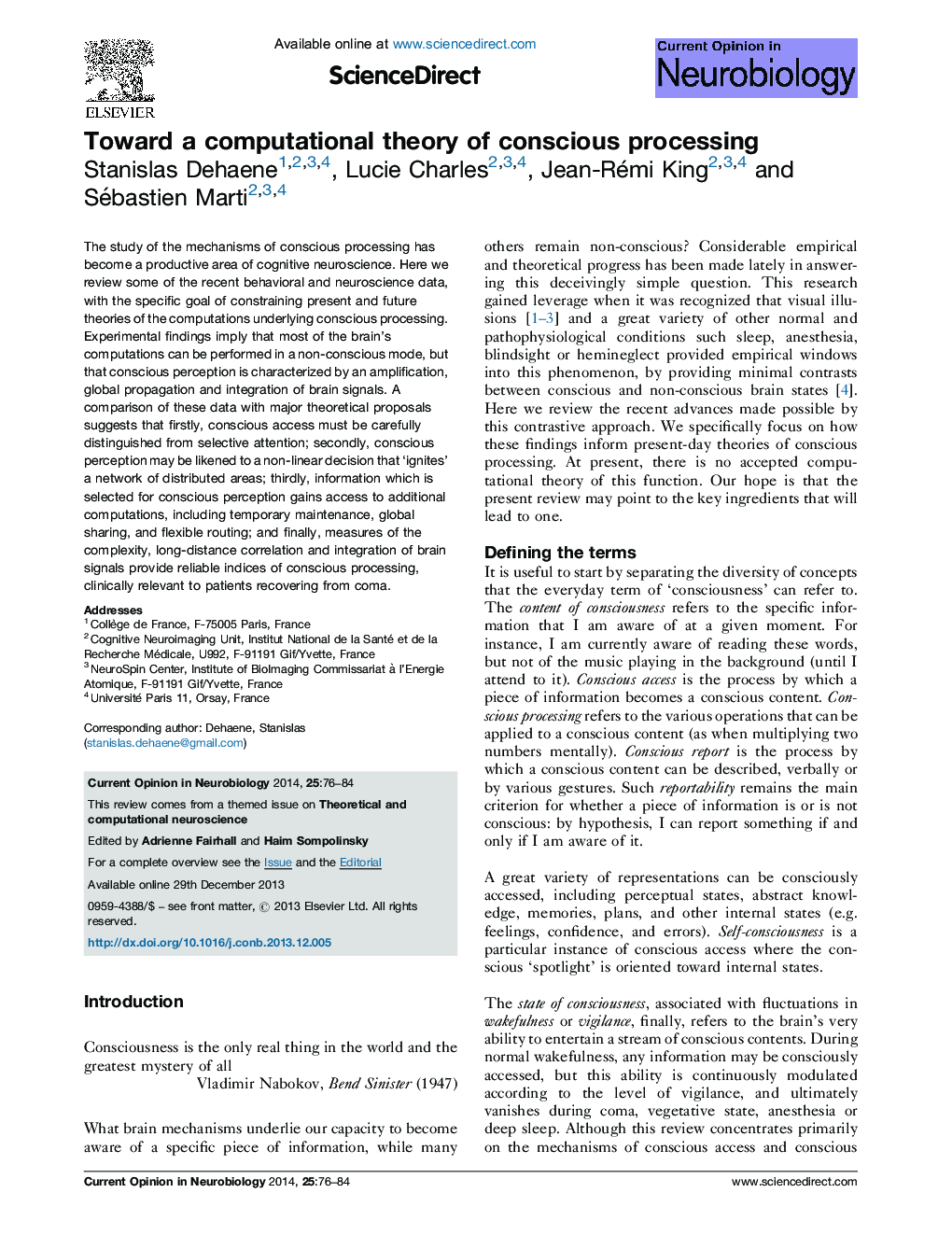| Article ID | Journal | Published Year | Pages | File Type |
|---|---|---|---|---|
| 6266539 | Current Opinion in Neurobiology | 2014 | 9 Pages |
â¢Most of the brain's early computations can be performed in a non-conscious mode.â¢Conscious perception results in an amplification, propagation and integration of brain signals.â¢Conscious perception is associated with a non-linear ignition in distributed areas.â¢Conscious stimuli can be maintained, globally shared, and flexibly routed.â¢Complexity and long-distance integration provide signatures of conscious processing.
The study of the mechanisms of conscious processing has become a productive area of cognitive neuroscience. Here we review some of the recent behavioral and neuroscience data, with the specific goal of constraining present and future theories of the computations underlying conscious processing. Experimental findings imply that most of the brain's computations can be performed in a non-conscious mode, but that conscious perception is characterized by an amplification, global propagation and integration of brain signals. A comparison of these data with major theoretical proposals suggests that firstly, conscious access must be carefully distinguished from selective attention; secondly, conscious perception may be likened to a non-linear decision that 'ignites' a network of distributed areas; thirdly, information which is selected for conscious perception gains access to additional computations, including temporary maintenance, global sharing, and flexible routing; and finally, measures of the complexity, long-distance correlation and integration of brain signals provide reliable indices of conscious processing, clinically relevant to patients recovering from coma.
